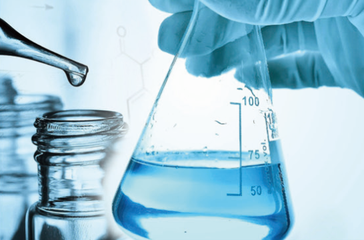定制合成 Custom synthesis
联系方式 Contact Us
当细胞受到外界环境的刺激(如加热、饥饿)时,细胞内的蛋白质和 RNA 分子会相互聚集,形成团块。长期以来,这些团块被认为是细胞损伤的标志,是有害的功能失调的分子,因而是需要被细胞清除掉的。例如,在阿尔茨海默氏病、帕金森氏病和肌萎缩性侧索硬化(ALS)等神经退行性疾病的患者大脑中,我们都能观察到聚集成团的蛋白质累积在垂死的神经元内。近日,芝加哥大学的研究人员在《Cell》发文称他们发现,水凝胶”态多肽蛋白质能帮助细胞响应刺激。在出芽酵母中存在一种名为 poly(A)结合蛋白(Pab1)的蛋白质分子能够通过形成团块来响应外界刺激,帮助细胞渡过难关。
1.有益的蛋白质聚集
这项研究中,研究人员试图把 Pab1 团块分离出来。在显微镜下,那些团块看起来像圆形的水滴,与其说是团块,倒不如说是水凝胶,质地有点像果冻或是牙膏。最重要的是,当研究人员在活细胞中干扰这种水凝胶的形成时,这些细胞就失去了应对外界刺激的能力。也就是说,Pab1 水凝胶的形成,非但没有损害细胞的正常功能,还增强了细胞的适应性。
“这种蛋白质的聚集更像是一个有组织的紧急程序。就好像火灾警报时,人们离开原本的工作岗位,在特定的地方集合,以确保安全。”这篇文章的通讯作者、芝加哥大学助理教授 Drummond 说,“对细胞而言,水凝胶的形成不仅能够起到保护作用,还有调配的功能,比如打电话给消防队员和护理人员。”
2.应激机制?——相分离
近年来,大量的研究表明,形成蛋白质液滴和水凝胶是细胞组织和重塑自身的重要方式。其中有一个过程——“相分离”——是水凝胶形成所必须的,就像沙拉酱中的油和醋,虽然都是液体,却能够彼此分开。为了发生相分离,之前的研究通常会使用极端的实验条件,如高浓度的蛋白质或添加剂。而这项研究表明,细胞在受到外界刺激时,正常浓度的 Pab1 蛋白以及正常的细胞环境内就可以发生相分离。
“令人惊讶的是,我们实际上并不知道这些细胞如何感受外界温度的变化的,”Drummond 说,“动物具有感应温度变化的神经元,但单细胞的酵母却没有。这种相分离过程的温度敏感性远大于任何其他已经描述的温度传感系统。因此,我们猜测这种通过形成水凝胶来感应外界温度和其他刺激的机制可能是广泛存在的。”
Drummond 和他的同事们正在继续研究这种相分离过程如何帮助细胞在刺激下生存的。在文章中,研究人员暗示这可能是因为 Pab1 在响应刺激时能够协助表达特定的 mRNA,这些 mRNA 翻译出应激蛋白,帮助细胞生长。
3.相分离的逆过程与疾病
除此之外,研究人员还在研究如何将 Pab1 的水凝胶液滴分散成单个分子。研究相分离的逆转过程能够帮助我们理解这一过程为什么会失败。例如,在神经退行性疾病(阿尔茨海默氏病、ALS 等)患者的神经细胞中,蛋白质团块的存在可能是细胞利用相分离过程应对刺激的结果,是有益的。但问题是,细胞无法使这些团块返回到其正常状态。
“我们找到了蛋白质团块可能有利的第一个证据,” Drummond 说,“还有更多问题需要我们去解决,比如细胞是如何使用相分离过程来实现重要的功能,以及相分离这一可逆过程的故障如何导致疾病等。”
When cells are stimulated by external environment (such as heating and starvation), the proteins and RNA molecules in the cell will aggregate together to form clumps. For a long time, these clumps are considered to be markers of cell damage and are malfunctioning and malfunctioning molecules, and therefore need to be removed by cells. For example, in the brain of patients with neurodegenerative diseases such as Alzheimer's disease, Parkinson's disease and amyotrophic lateral sclerosis (ALS), we can all observe the accumulation of proteins in the dying neurons. Recently, researchers at the University of Chicago in the Cell said they found that a protein molecule called the poly (A) binding protein (Pab1) in the bud yeast can react to the external stimulus by forming a lump to help the cell survive the difficulty.
1. beneficial protein aggregation
In this study, researchers tried to separate the Pab1 masses. Under the microscope, the clusters look like round drops, rather than lumps, rather than hydrogels, which resemble jelly or toothpaste. Most importantly, when researchers interfere with the formation of such hydrogels in living cells, these cells lose the ability to respond to external stimuli. That is to say, the formation of Pab1 hydrogel not only does not damage the normal function of cells, but also enhances the adaptability of cells.
"The aggregation of this protein is more like an organized emergency procedure. Just like a fire alarm, people leave their jobs and assemble in specific places to ensure safety. "For cells, the formation of hydrogels can not only play a protective role, but also function, such as calling firefighters and nurses," said Drummond, an assistant professor at University of Chicago.
2. stress mechanism? - phase separation
In recent years, a large number of studies have shown that the formation of protein droplets and hydrogels is an important way of cell organization and remodeling itself. One of these processes, "phase separation", is necessary for the formation of hydrogels, like oil and vinegar in the salad dressing, which, though liquid, can be separated from each other. In order to occur phase separation, previous studies usually use extreme experimental conditions, such as high concentrations of protein or additives. This study shows that cells can undergo phase separation during normal stimulation of Pab1 protein and normal cell environment.
"Surprisingly, we don't really know how these cells feel the temperature changes in the outside world," Drummond said. "Animals have neurons that respond to temperature changes, but single cell yeasts do not. The temperature sensitivity of the phase separation process is much greater than that of any other temperature sensing system described. Therefore, we hypothesize that the mechanism by which hydrogel can induce external temperature and other stimuli may be widespread.
Drummond and his colleagues are continuing to study how this phase separation process helps cells survive under stimulation. In the article, the researchers suggest that this may be because Pab1 can help express specific mRNA in response to stimulus, which translates stress proteins to help cell growth.
The inverse process and disease of 3. phase separation
In addition, researchers are still studying how to disperse Pab1 hydrogel droplets into single molecules. Studying the reverse process of phase separation can help us understand why this process fails. For example, in the nerve cells of patients with neurodegenerative diseases (Alzheimer's disease, ALS, etc.), the presence of protein mass may be beneficial for the cell use phase separation process to respond to the results of stimulation. But the problem is that cells can't get these masses back to their normal state.
"We have found the first evidence that the protein mass may be beneficial," Drummond said. "There are more questions that need us to solve, such as how cells use the phase separation process to achieve important functions, and how the phase separation of the reversible process causes disease."
本公司的所有产品仅用于科学研究或者工业应用等非医疗目的,不可用 于人类或动物的临床诊断或治疗,非药用,非食用。








